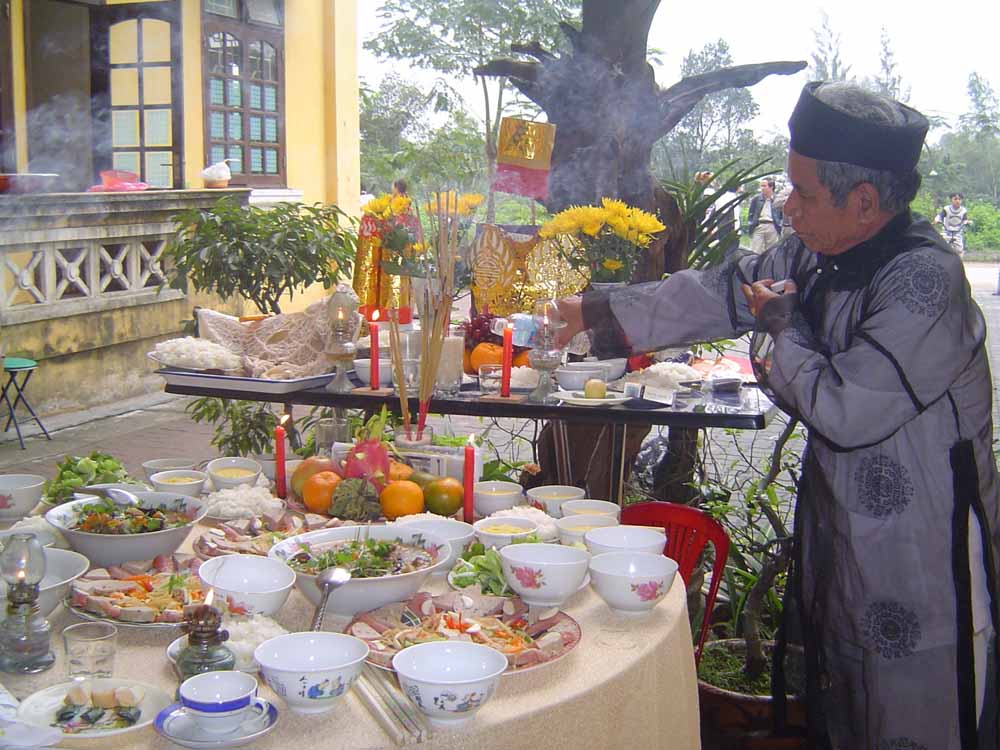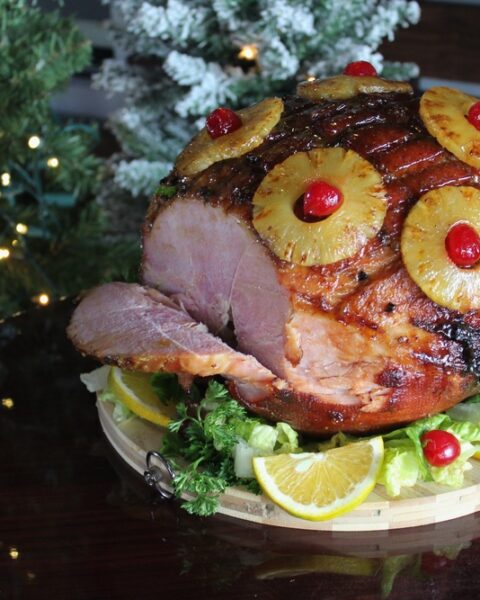Holidays are a time for celebration, reflection, and tradition, but not all holiday customs are as familiar as the ones we see in mainstream cultures. Across the globe, different communities have unique and sometimes unconventional ways of marking special occasions. While some may seem strange to outsiders, each ritual holds deep cultural meaning, connecting people to their heritage and community. These holidays often reflect a blend of ancient practices, regional influences, and local beliefs. Participating in or learning about such traditions can broaden our understanding of the world and the many ways people celebrate life. Here are some of the most unusual and intriguing holiday traditions from different parts of the world.
Contents
- 1 Krampusnacht (Austria and Germany)
- 2 La Tomatina (Spain)
- 3 Midsummer (Sweden)
- 4 Omisoka (Japan)
- 5 Carnival (Brazil)
- 6 Day of the Dead (Mexico)
- 7 Festa de São João (Brazil)
- 8 Chuseok (South Korea)
- 9 Boxing Day (United Kingdom and Commonwealth)
- 10 Sinterklaas (Netherlands)
- 11 Up Helly Aa (Scotland)
- 12 La Feria de Abril (Spain)
- 13 Tết Nguyên Đán (Vietnam)
- 14 More From RetailShout
- 15 What’s Trending at Aldi This Week (12/15/2024)
- 16 10 Best Buys at Sam’s Club This Week (12/15/2024)
Krampusnacht (Austria and Germany)

In Austria and parts of Germany, December 5th is celebrated as Krampusnacht, a night dedicated to Krampus, a terrifying figure who punishes naughty children. While Saint Nicholas rewards the well-behaved with gifts, Krampus scares and sometimes even kidnaps misbehaving kids. People dress up as Krampus in elaborate costumes, complete with horns, fangs, and chains. The tradition is a mix of dark folklore and religious observance, reflecting a balance between good and evil. Krampuslauf, or Krampus runs, occur in some cities where revelers parade through the streets in their frightening costumes. Though unsettling, the tradition is a fun way to remind children to behave during the holiday season.
La Tomatina (Spain)

La Tomatina is an annual festival held in Buñol, Spain, where participants engage in an epic tomato fight. The tradition started in 1945 during a local festival when a food fight broke out, and it became an official event in 1959. Thousands of people gather in the town square, and for about an hour, they throw overripe tomatoes at each other, turning the streets into a sea of red. The festival is a celebration of fun and release, with no official winner, but plenty of laughter. The tomatoes used are grown specifically for the event, and afterward, the streets are cleaned by fire trucks and volunteers. La Tomatina has become a global phenomenon, drawing visitors from all over the world.
Midsummer (Sweden)

Midsummer in Sweden celebrates the summer solstice and is considered one of the most important holidays in the country. On this day, people gather in the countryside to raise a “midsommarstång,” a tall pole decorated with flowers and greenery, symbolizing fertility and the abundance of summer. Swedes traditionally dance around the pole, singing folk songs, and wearing crowns made of wildflowers. A festive meal is enjoyed, often featuring pickled herring, new potatoes, and schnapps. The holiday is also known for its all-night partying, as the sun barely sets, creating a magical atmosphere. Midsummer marks the height of summer and is a time to embrace nature, eat, drink, and celebrate with friends and family.
Omisoka (Japan)

Omisoka, or New Year’s Eve in Japan, is a family-oriented celebration filled with traditional customs. On this day, families clean their homes to purify themselves for the new year and prepare special foods like osechi-ryori, a variety of dishes that symbolize prosperity, longevity, and happiness. At midnight, many people visit temples to ring bells 108 times, which is believed to cleanse the 108 human sins in Buddhist tradition. In some regions, people enjoy toshikoshi soba (buckwheat noodles), symbolizing the crossing from one year to the next. It is also customary to watch the first sunrise of the year, as it is believed to bring good luck. The spirit of Omisoka is about renewal, respect for traditions, and preparing for a fresh start.
Carnival (Brazil)

Carnival in Brazil is a massive celebration that occurs before Lent, known for its vibrant parades, samba music, and colorful costumes. The highlight of the event is the parade in Rio de Janeiro, where samba schools compete, creating elaborate floats and performances. People from all over the world travel to Brazil to participate in the festivities, which are filled with dancing, music, and street parties. The celebration has roots in European Catholic traditions but has evolved into a uniquely Brazilian event that mixes indigenous, African, and European cultures. Carnival is a time for people to let loose, and the streets are filled with joy, energy, and creativity. The festival ends with Ash Wednesday, marking the beginning of Lent, but its impact lingers in the hearts of all who participate.
Day of the Dead (Mexico)

Dia de los Muertos, or Day of the Dead, is a Mexican holiday that honors deceased loved ones, celebrated on November 1st and 2nd. Families create altars (ofrendas) at home and in cemeteries, decorating them with photos, candles, marigolds, and favorite foods of the departed. The belief is that the spirits of the dead return to the world of the living during these days to enjoy the offerings and reconnect with their families. Sugar skulls, or “calaveras de azúcar,” are often used to decorate altars, and people paint their faces to resemble skeletons. The holiday combines indigenous beliefs with Catholic practices, focusing on celebrating life and death rather than mourning it. The Day of the Dead is a joyous, colorful occasion that emphasizes remembrance and family unity.
Festa de São João (Brazil)

Festa de São João, or the Feast of Saint John, is celebrated throughout Brazil with bonfires, dancing, and traditional foods. Held in late June, it honors Saint John the Baptist, and people in rural areas especially participate in the festivities. One of the main activities is the “quadrilha,” a lively square dance, where couples perform choreographed steps to folk music. The streets are filled with large bonfires that symbolize warmth and light, and fireworks are a common feature. Foods such as milho verde (corn on the cob), canjica (sweet corn pudding), and pamonha (corn dough wrapped in leaves) are traditional treats. The celebration mixes Catholicism with Brazilian folk customs, making it a unique blend of faith and festivity.
Chuseok (South Korea)

Chuseok is a major harvest festival in South Korea, held in the fall, and is often compared to Thanksgiving. Families travel to their ancestral hometowns to pay respects to their ancestors, performing rituals at the family altar known as “jesa.” The holiday is also a time for feasting, with traditional foods like songpyeon (rice cakes filled with sweet fillings) and bulgogi (marinated grilled beef). People wear hanbok, the traditional Korean dress, and enjoy various outdoor activities like dancing and playing traditional games such as “ssireum” (Korean wrestling). While Chuseok celebrates the harvest and honoring of ancestors, it also emphasizes family bonds and gratitude. It is a joyful time for reunion and reflection.
Boxing Day (United Kingdom and Commonwealth)

Boxing Day, celebrated the day after Christmas, has roots in the tradition of giving to the less fortunate. In medieval times, it was customary for the wealthy to give boxes of food, clothing, or money to their servants and the poor. Today, it has become a shopping holiday, with huge sales and discounts at stores across the UK and Commonwealth countries. People also gather with friends and family for relaxed post-Christmas celebrations, often enjoying leftover food and watching sports like football or horse racing. The tradition varies slightly by country, but the core theme of generosity remains. In some areas, people also engage in charity events or volunteer their time to help others.
Sinterklaas (Netherlands)

Sinterklaas is a holiday celebrated in the Netherlands on December 5th and 6th, honoring Saint Nicholas. The holiday includes the arrival of Sinterklaas, who comes from Spain by steamboat, accompanied by his helpers, known as “Zwarte Piet.” On the night of December 5th, families exchange gifts and enjoy festive meals. One of the unique traditions is the “Sinterklaas dobbelspel” (Saint Nicholas dice game), where players roll dice to determine what gifts they will give or receive. Children leave their shoes out by the door to receive small gifts and candy. The holiday is deeply rooted in Dutch folklore, blending elements of Saint Nicholas with local customs and celebrations.
Up Helly Aa (Scotland)

Up Helly Aa is a Viking-inspired fire festival celebrated in Lerwick, Shetland, on the last Tuesday in January. The event honors the region’s Viking heritage and involves a procession of participants dressed as Vikings, led by the “Guizer Jarl,” or Viking chieftain. The highlight of the festival is the burning of a Viking longship, symbolizing the end of the dark winter and the return of light. The procession includes traditional Norse music, dance, and costumes, with many revelers participating in elaborate group costumes. The celebration is filled with singing and merry-making, lasting well into the night. Up Helly Aa is a unique celebration of history, community, and the winter season.
La Feria de Abril (Spain)

La Feria de Abril, or the April Fair, is one of Seville’s most famous festivals, celebrated in late April or early May. The fairground is filled with colorful tents, called “casetas,” where families and friends gather to eat, drink, and dance the flamenco. Attendees dress in traditional Andalusian outfits, with women wearing “traje de flamenca” dresses and men in suits. The fair also features bullfights, horse parades, and carnival-like rides, creating a lively and vibrant atmosphere. The origins of the festival date back to a livestock fair in 1847, but over time, it has evolved into a celebration of Andalusian culture. La Feria de Abril is a time for the people of Seville to come together and celebrate their heritage, music, and food.
Tết Nguyên Đán (Vietnam)

Tết Nguyên Đán, or the Lunar New Year, is the most important holiday in Vietnam, celebrated with great enthusiasm and deep cultural significance. Families gather to honor their ancestors, prepare large meals, and offer prayers for good fortune in the coming year. One unique tradition is the “bánh chưng,” a square sticky rice cake filled with pork and mung beans, which symbolizes the Earth’s shape. Homes are thoroughly cleaned before Tết to sweep away bad luck and make room for positive energy. During the first few days of the celebration, people avoid arguments, bad news, or anything considered unlucky. The holiday also features “li xi,” or lucky money, where children and unmarried adults receive small red envelopes filled with money for prosperity and good health.
This article originally appeared on RetailShout.
More From RetailShout
11 Costco Frozen Favorites That Deserve a Spot in Your Freezer

Frozen food has a bad reputation, but Costco is changing the game with its incredible selection of high-quality frozen items. These frozen favorites are not only tasty, but they’re also super convenient for busy nights when you don’t want to cook. Read More.
What’s Trending at Aldi This Week (12/15/2024)

Aldi’s shelves are buzzing with exciting finds this week, and there’s a little something for everyone. From festive holiday treats to cozy home essentials, the lineup is packed with surprises worth grabbing. Read More.
10 Best Buys at Sam’s Club This Week (12/15/2024)

This week at Sam’s Club, there are some truly tempting deals to kick off the holiday season. Whether you are looking for festive treats, gourmet gifts, or a little something special to serve at your next gathering, Sam’s Club has you covered. Read More.






